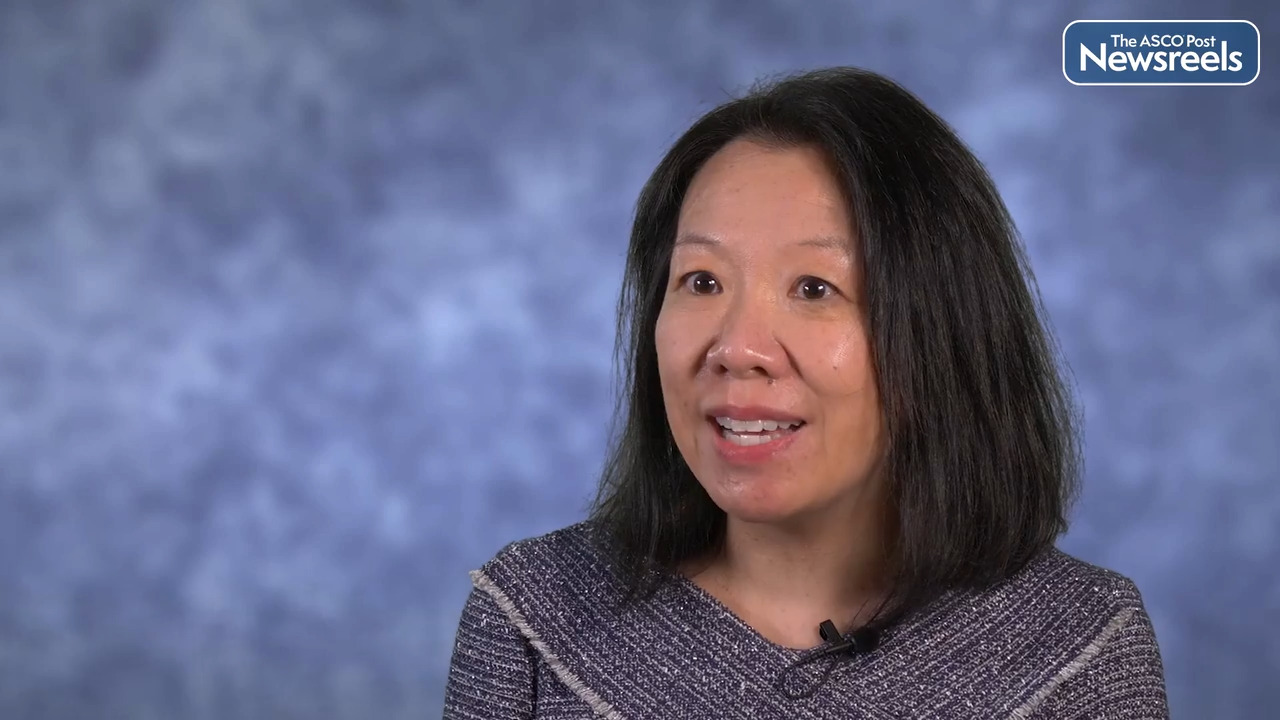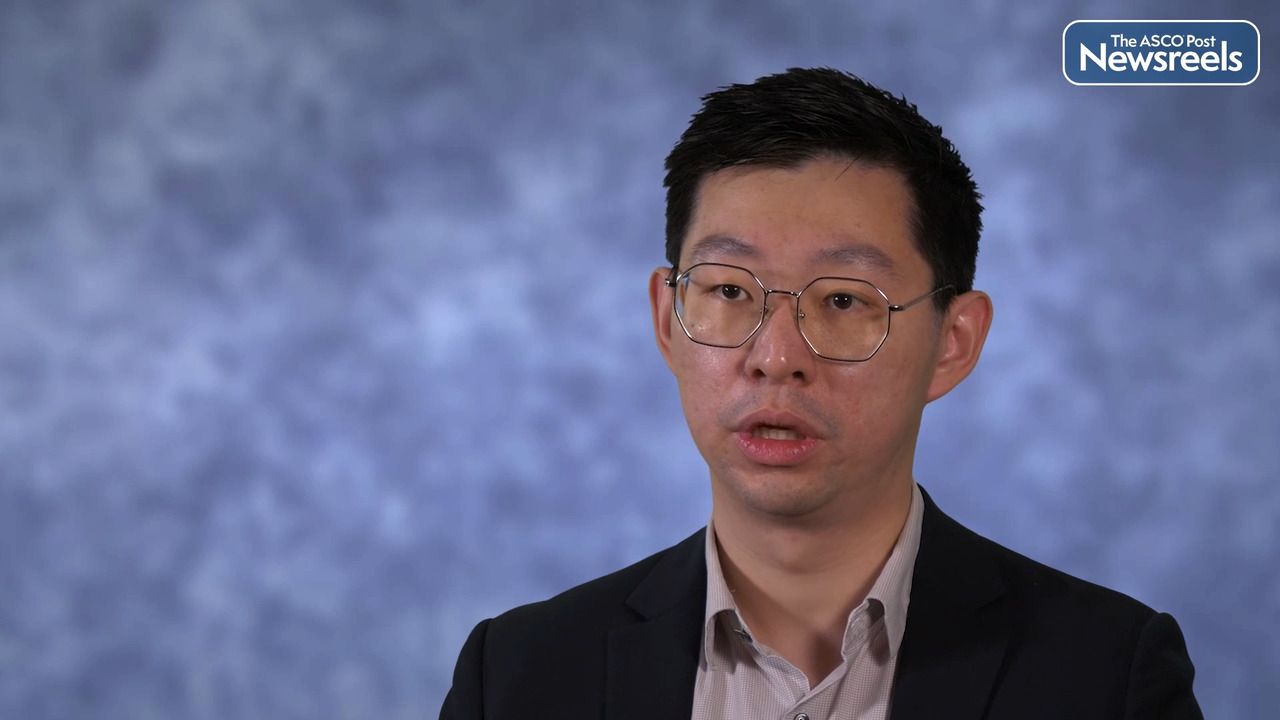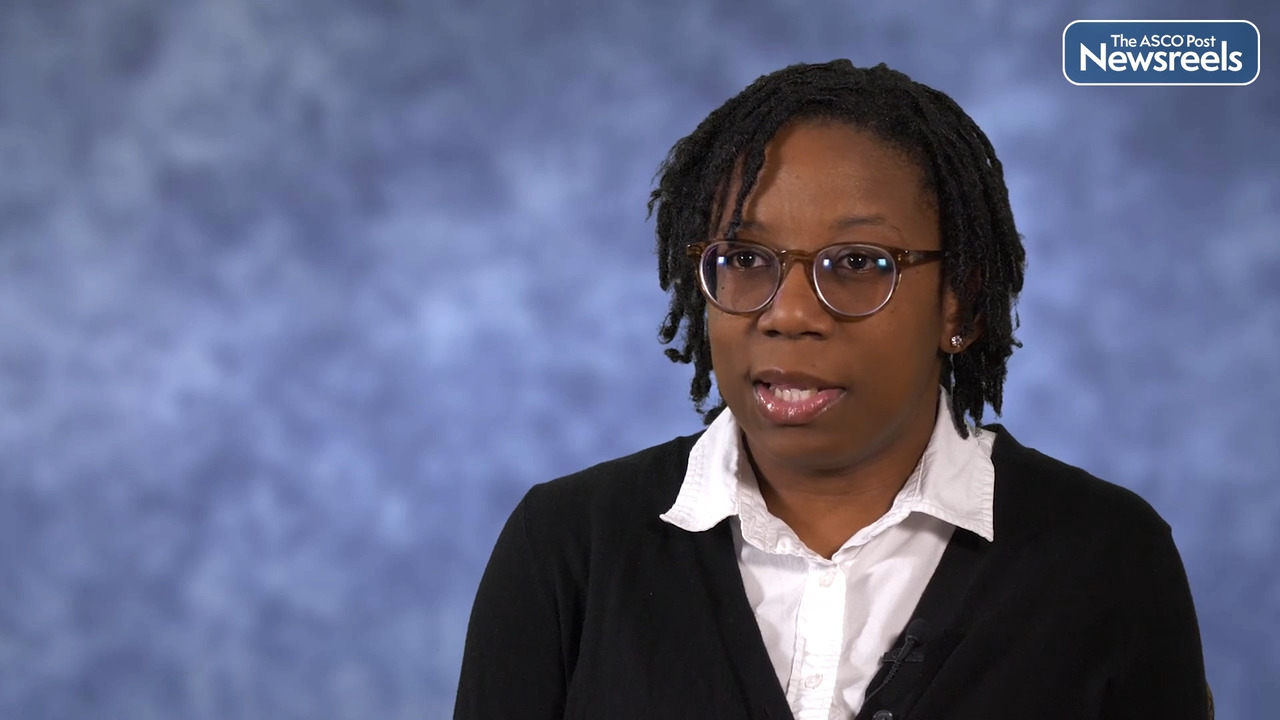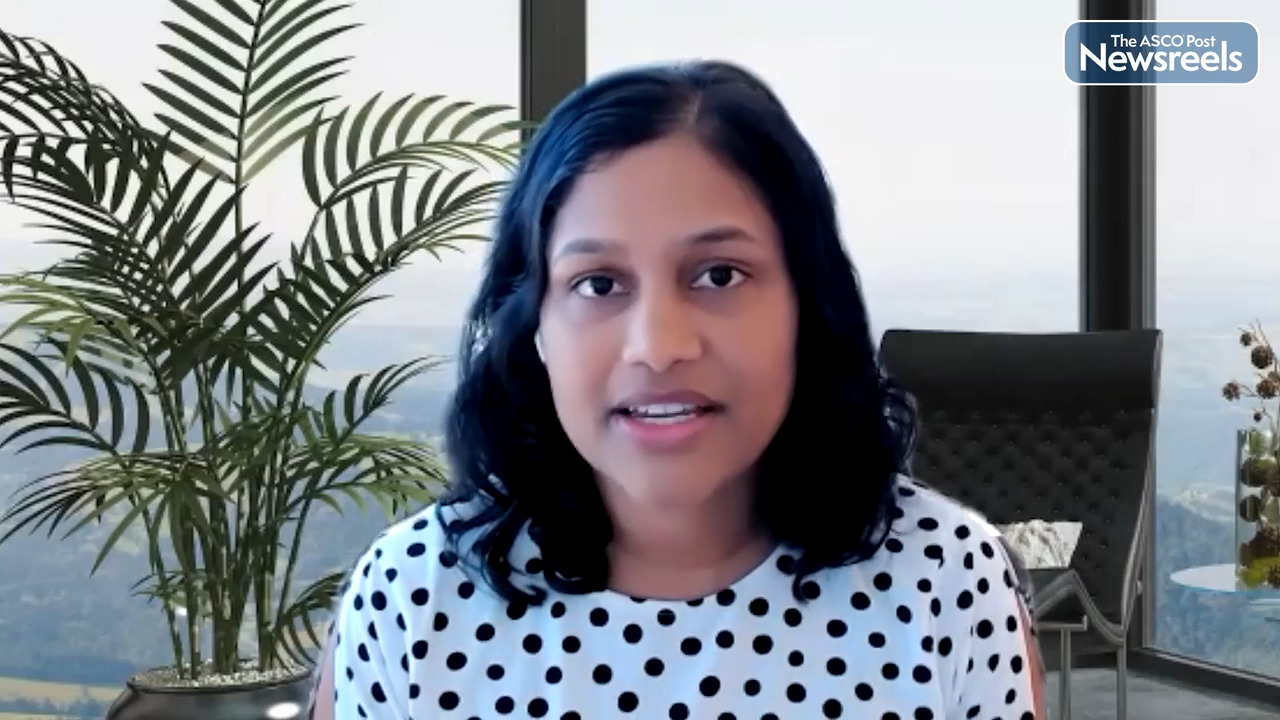Related Videos
Sandra L. Wong, MD, on Severe Symptom Reporting in Patients With Cancer Who Have Undergone Surgery
Sandra L. Wong, MD, of the Dartmouth-Hitchcock Medical Center, discusses her study findings showing that when patients with cancer who have had surgery reported severe symptoms via an electronic patient-reported outcomes questionnaire at six cancer centers, it appeared to be beneficial without overtaxing clinicians. There were few strong predictors of severe symptoms, which suggests population surveillance may be preferable to targeted surveillance (Abstract 243).
Changchuan Jiang, MD, MPH, on Transportation Barriers, Delays in Cancer Care, and Increased Mortality for Patients With Cancer
Changchuan Jiang, MD, MPH, of Roswell Park Comprehensive Cancer Center, discusses the lack of transportation as a potentially modifiable barrier to care for patients with cancer. Timely intervention may reduce visits to hospital emergency departments, lower costs, and improve outcomes (Abstract 70).
Joannie M. Ivory, MD, MSPH, on Increasing Participation of Black Patients With Cancer in Clinical Trials
Joannie M. Ivory, MD, MSPH, of The University of North Carolina at Chapel Hill, discusses ways to raise the number of Black patients with cancer who take part in clinical trials. More successful accrual may be linked to conducting trials where Black patients live and designing studies to recruit a concrete target percentage of marginalized populations.
Samyukta Mullangi, MD, MBA, on Predictors of Compliance With Payer-Led Oncology Clinical Pathways
Samyukta Mullangi, MD, MBA, of Memorial Sloan Kettering Cancer Center, discusses her findings showing that physicians’ prescribing behavior may be influenced by payer-led pathways. Pathway compliance was associated with higher medical costs during a 6-month baseline period but lower health-care utilization, as measured in hospitalizations and emergency department visits during that baseline period (Abstract 7).
Regina Barragán-Carrillo, MD, on Breast Cancer Screening in the Transgender Population
Regina Barragán-Carrillo, MD, of Mexico’s National Institute of Medical Sciences and Nutrition Salvador Zubirán, discusses her findings showing that currently, physicians have limited knowledge about breast cancer screening in transgender patients. Were this topic addressed with widespread information, it could possibly reduce the health-care inequalities faced by this diverse group of patients (Abstract 71).





